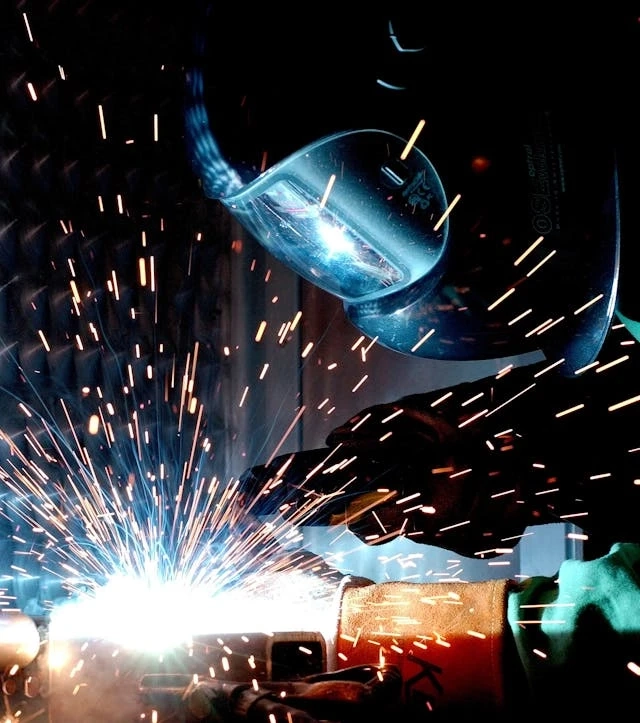In today's competitive manufacturing landscape, choosing the right production method is crucial for success. Metal stamping offers numerous advantages that enhance efficiency and product quality. This process involves converting flat metal sheets into specific shapes through stamping presses. It stands out for its precision, cost-effectiveness, and adaptability to various materials. Understanding the benefits of metal stamping can help manufacturers make informed decisions that drive growth.
Precision and Consistency
Metal stamping ensures unparalleled precision and consistency in manufacturing processes. This technique utilizes advanced machinery to produce components with exact specifications and minimal variation. Consistent output is crucial for industries requiring high-quality standards, such as automotive and aerospace. Precision in metal stamping reduces the need for secondary operations, saving time and resources. Furthermore, the repeatability of this process guarantees uniformity across large production runs, enhancing overall product reliability. This method's accuracy and consistency are pivotal in meeting stringent industry requirements and maintaining competitive advantages.
Cost-Effectiveness
Metal stamping is highly cost-effective, offering significant savings in manufacturing processes. The method's efficiency reduces labor costs, as it automates production with minimal human intervention. Additionally, the speed of metal stamping allows for large volumes of parts to be produced quickly, further lowering costs. The process also minimizes material waste, maximizing the use of raw materials and reducing expenses. By streamlining production and reducing overheads, metal stamping becomes an economically advantageous choice for manufacturers aiming to enhance profitability.
High Production Speed
Metal stamping excels in achieving high production speeds, making it ideal for large-scale manufacturing. This process utilizes advanced machinery that can produce thousands of parts per hour. Rapid production capabilities significantly reduce lead times, allowing manufacturers to meet tight deadlines efficiently. The quick turnaround also enhances inventory management, reducing the need for large stockpiles. This high-speed production method supports just-in-time manufacturing, which minimizes waste and improves overall operational efficiency.
Versatility in Material Use
Metal stamping offers remarkable versatility in material use, accommodating a wide range of metals. This flexibility allows manufacturers to work with materials such as aluminum, brass, copper, and stainless steel. Metal stamping companies can customize processes to suit specific material properties, ensuring optimal performance and quality. This adaptability makes metal stamping suitable for diverse applications across industries, from automotive to electronics. By leveraging various materials, manufacturers can achieve desired characteristics like strength, conductivity, and corrosion resistance.
Reduced Waste and Environmental Impact
Metal stamping significantly reduces waste and environmental impact in manufacturing processes. This method maximizes material utilization by precisely cutting and shaping metal sheets. The efficient use of materials leads to minimal scrap, decreasing the need for raw material extraction. Additionally, metal stamping processes often require less energy compared to other manufacturing methods, further reducing the environmental footprint. These advantages make metal stamping an eco-friendly choice for sustainable manufacturing practices.
Complex Shapes and Designs
Metal stamping enables the creation of complex shapes and designs with high precision. Advanced tooling and die techniques allow for intricate patterns and detailed features. This capability is essential for industries requiring unique components, such as automotive and electronics. Metal stamping can achieve intricate geometries that are difficult with other manufacturing methods. The ability to produce complex parts efficiently makes metal stamping invaluable for innovative product designs.
Enhanced Durability and Strength
Metal stamping enhances the durability and strength of manufactured components. The process involves high-pressure techniques that improve the structural integrity of metal parts. This method ensures that parts can withstand significant stress and wear, making them ideal for demanding applications. Enhanced durability reduces the frequency of part replacements, leading to cost savings over time. Additionally, metal stamping can incorporate advanced heat treatments and coatings to further bolster strength and resistance to corrosion. Moreover, the strength of stamped metal components ensures reliable performance in critical applications. This combination of durability and robustness makes metal stamping a preferred choice for high-performance industries.
The Future of Metal Stamping in Manufacturing
Metal stamping significantly enhances manufacturing processes, offering precision, cost savings, and versatility. These benefits lead to improved product quality and efficiency. By adopting metal stamping, manufacturers can meet diverse production needs effectively. The future of metal stamping in manufacturing looks promising with ongoing technological advancements. Embracing this method can drive success and innovation in the industry.


